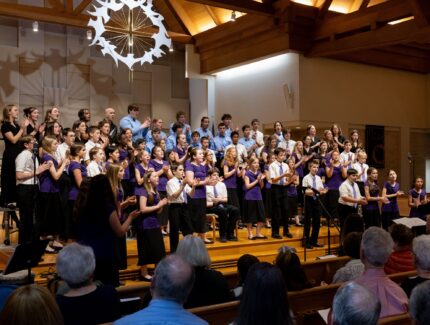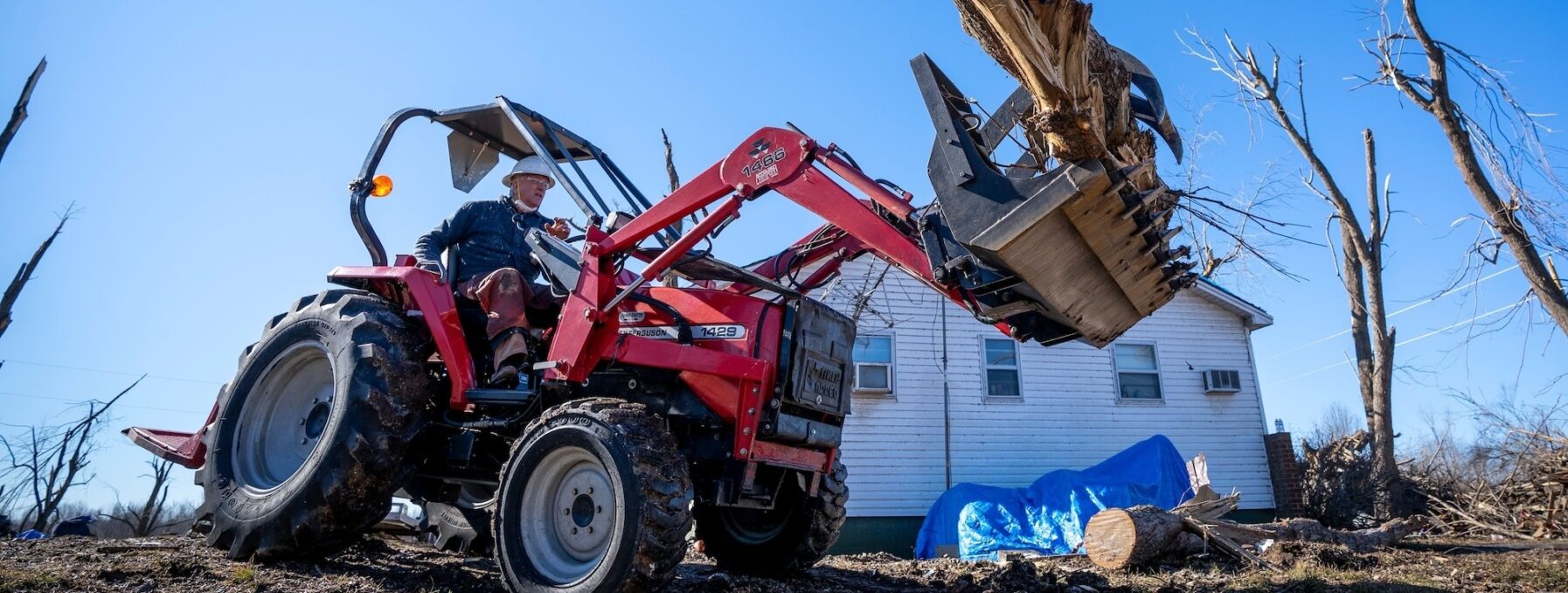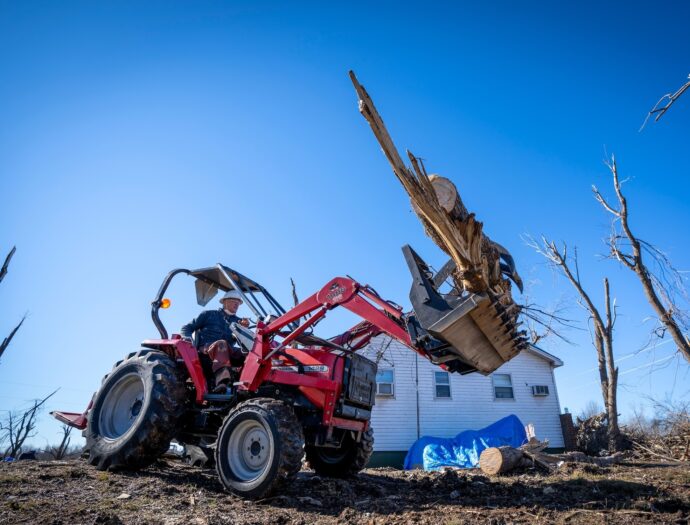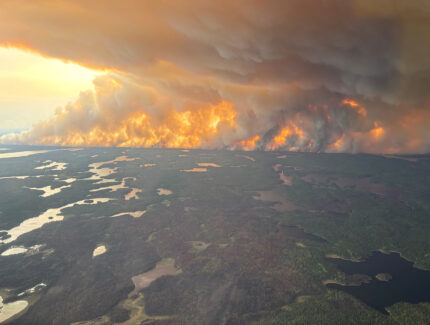


October 24, 2023
Early response: your frequently asked questions—answered
Ivan Shirk and Manny Flaud, Jr., share their wisdom about early response teams: how they work, and why they’re important. Both men draw from their experience with Storm Aid, a Mennonite Disaster Service (MDS)-associated group from Lancaster County, Pennsylvania
Early Response work in Mayfield, KY
What’s early response?
Shirk: Early response, which begins when search-and-rescue is complete, can be removing trees, tarping houses, or mucking out houses after a flood. If a roof is partially blown off, we may tarp that roof to mitigate further damage. Or a fallen tree might be resting on the house, and we might saw the tree off, then tarp the roof so the rain doesn’t come in.
When you assess an area for potential early response after a disaster, where do you get information?
Flaud: Sometimes there’s no electricity for miles. Sometimes the Federal Emergency Management Agency isn’t there yet. We may inquire at a local fire company, or with local churches. One of the most valuable places I find is a local restaurant, where a bunch of older guys might be sitting around the table. Locals know their own community.
Why can’t I just get in my truck, drive to a disaster site, and do early response by myself, or with a few friends?
Shirk: In order to do early response safely, we need to be evaluate and be prepared before being on the ground. We need to be careful, and be mindful of who else is there and how they’re going to be responding.
Flaud: The four pillars of an MDS response—meaningful work, accommodations, funding, and volunteers—apply to early response just as much as long-term recovery. In early response, you need to plan what you’re going to do with the debris you clean up. An MDS team must also be prepared to go to the disaster area not knowing the exact day they’ll come home again.
How long does early response usually last?
Flaud: While long-term recovery can last for years, early response typically lasts for several weeks. After a tornado in Louisville, Mississippi, for example, early response lasted five weeks. That time frame worked really well.
Shirk: A general rule of thumb is, if you have two days of search-and-rescue, you can expect two weeks of early response. If you have three days of search-and-rescue, you can expect three weeks of early response, and so on.
How do you know when to end an early response effort?
Shirk: When you’re starting to see jobs that are related to long-term recovery—hanging drywall, for example— it’s time to end the early response phase. Volunteers need to know that early response won’t last for months.
Why should we do early response?
Shirk: Early response is an excellent volunteer generator. It grabs the volunteers’ attention. You just took that tree off a disaster survivors’ roof—you just saved the day. And you get to do this two, three, four times a day for the whole week! Those volunteers want to come back. They see such a need.
How can I get involved with an early response team? Contact your local MDS unit or region at [link].
Susan Kim, MDS Writer





